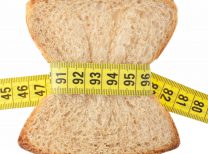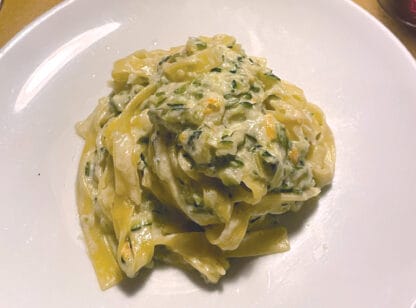I have been grain free for the last 2+ years and love the physical benefits I continue to see and feel. I’ve made it through the cravings stage and while I do admit to a gluten-free wrap or crackers every once in a while, living primarily grain-free is a lifestyle choice I plan to maintain.
This choice also worked well with my exercise routine of walking and yoga, but recently I decided to hit the gym and start strength training for something new and challenging. I used to be a casual competitive runner and knew the rules for working out, but when it comes to nutrition, those rules are definitely changing.
After just a few training sessions, it was obvious that my grain-free lifestyle was not supporting me. I lacked energy during workouts and felt completely deflated afterwards. Now, the old schoolbook on nutrition and exercise had us “carbing up” with pasta feeds the night before a race and carrying sugary gel packs to help us make it to the finish line. So, with the advice from others and against my own will, I started adding healthy grains (quinoa, rice) back into my diet. While they gave me more energy, I didn’t feel good about it, and most of all, I wasn’t “toning down” as I had hoped from pumping all this iron.
I felt envious of those Paleo CrossFit kids and started feeling like a grain-free wannabe athlete.
So, I dived into the latest science from renowned doctors Jeff Volek, Ph.D. and Stephen Phinney, M.D., considered leaders in the field of clinical nutrition by doctors, nutritionists, and fitness professionals across the globe. They have two books: The Art and Science of Low Carbohydrate Living and The Art and Science of Low Carbohydrate Performance, which were recommended by Dr. Joe Scherger, M.D., an ultra-marathoner.
The bottom line is that it appears our bodies can indeed switch from requiring carbs for energy to resourcing our existing fat for fuel. That sounds great! Who doesn’t want their body to use existing fat for fuel?
The bad news…It can take two or more weeks for your body to make the switch from burning ingested carbs to resourcing fat first, a state the authors call “keto-adaption.” It also requires a consistent diet of less than 50 grams of carbs per day. That’s a bowl of spinach, cup of berries and a cup of mixed nuts – for the day. Hmmm.
According to the authors:
- Fueling tactics that emphasize carbohydrate-based diets and sugar-based energy supplements make your body dependent on carbs for energy while simultaneously inhibiting fat mobilization and utilization. This suppression of fat burning lasts for days after carbs are consumed, not just the few hours following their digestion when insulin levels are high.
- Keto-adapted athletes show marked increases in fat burning, indicating that peak rates of human fat oxidation have been significantly underestimated.
- Keto-adapted athletes show improved performance and endurance as the total amount of energy stored as fat will typically be more than 20 times the maximum level of carbohydrates stored in the body (even with very lean athletes).
Could this be the reason for working out, yet not losing weight?
It was interesting to read a 2008 blog from Loren Cordain, Ph.D., the inventor of The Paleo Diet, in which he actually said that when it comes to eating for performance, serious athletes needed to “bend the rules of the Paleo Diet” since they were placing demands on the body that were not normal for our Stone Age ancestors.1 I wondered what he thought of this new research and found a 2015 blog in which he praised the doctors’ work:
Dr. Volek and his team are investigating the impact of very low-carb diets on an athlete’s capacity to burn fat for fuel, compared to the traditional high-carb diets used by endurance athletes…The initial data is sending shockwaves through the exercise community.2
Cordain also notes that, if you are engaging in endurance sports to lose weight, this is critical as your excess carbohydrate consumption is likely holding you back from achieving a better body.2
As stated in The Art and Science of Low Carb Performance, it’s unfortunate that the human body is unable to promptly switch from carbs to fat as its predominant exercise fuel, so once the former is gone, you can’t power your performance with fat (even though your carb-depleted body still has tens of thousands of fat calories on hand).
The authors go on to say the physiological adaption to low carb living allows much greater reliance on body fat, not just at rest but also during exercise, meaning less dependence on muscle glycogen and less need to reload with carbs during and after exercise.
But how do you get there?
There is certainly a learning curve, and the food restrictions exceed the grain-free lifestyle. While Performance gives you lists of foods to eat and recipes, if you are just starting on a low carb diet, the authors recommend you start with The Art and Science of Low Carbohydrate Living.
Sourcing a voice of reason, I turned to our oldest daughter Diana, a chiropractor and nutritional buff, who with her husband Buckley owned a CrossFit gym and compete regionally. They both maintain a Paleo-style diet.
She has seen keto-adaption in action. “Often people who go Paleo maintain a higher fat, lower carb intake and, yes, their body burns fat far more efficiently and they are less dependent on carbs.” She has studied the research on protein and fat versus carbs for fuel and says what she sees most often is that people don’t make it past that transition period during which you can feel extremely fatigued.
Diana also brings up an important point which for many may be a more realistic option. “People forget that grain-free and low carb are two clearly different things. Often when people go grain-free, they inadvertently go too low carb.” Again, low carb is good if you are prepared and working towards that, but it can catch you off guard if not (as in changing your workout routine and BONKING at the gym).
“There are many completely ‘safe’ carbohydrates that are a fantastic form of fuel without the side effects of grains such as sweet potatoes, plantains, and butternut squash,” she adds.
Michael Butler, an endurance athlete and owner of Kinetix Performance in Palm Desert, is a big proponent of shakes. “After you work out, you need a healthy source of protein and carbs within the first hour for recovery. Shakes are more absorbable and will help repair tissue quicker.” He recommends a whey or vegan protein powder shake with berries following a workout.
While achieving keto-adaption sounds ideal for the athlete who wants to be the lean, mean performance machine, the nutritional intake is pretty restrictive. For those of you ready to go, I strongly recommend these two books.
Here is what I have surmised from my research:
- Keto-adaption appears to be the new movement in athletic performance.
- The process of achieving this state (where your body burns fat first) takes at least two weeks of preparation for the strategy to work.
- “Carbing up” doesn’t have to come from grains and sugars; it can come from green protein shakes, small portions of fruit, or starchy plants like sweet potatoes, taro root and yucca.
- Timing of meals is very important for sustaining energy during exercise.
- The type and duration of exercise plays an important role on what and when you eat.
- Healthy fats also play an important role.
Everyone’s body is different, but know that wherever you are, you can change. Set goals, do your research and/or work with a fitness or nutritional expert to achieve those goals.
References: 1) TrainingPeaks: A Quick Guide to the Paleo Diet for Athletes. Oct. 31, 2008; 2) Loren Cordain, Ph.D. blog: http://thepaleodiet.com/burn-fats-fuel-for-endurance-athletes












































Comments (0)